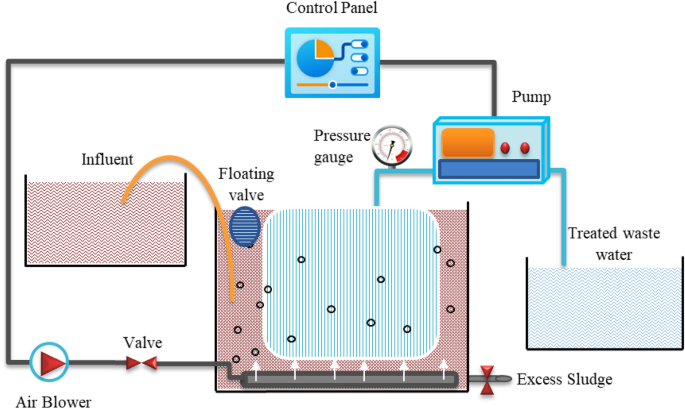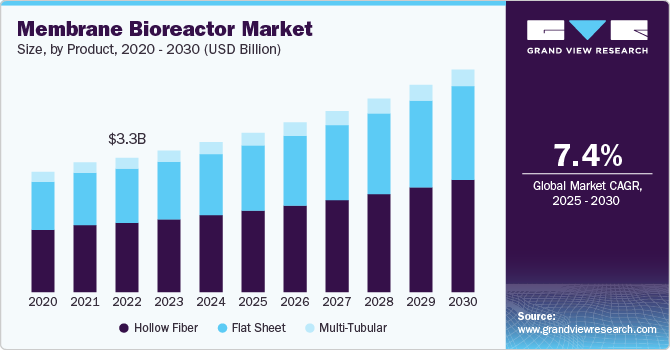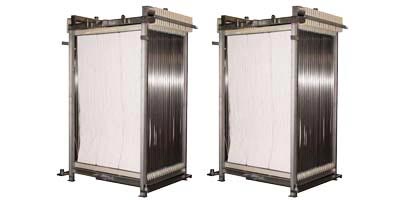Innovations in Membrane Bioreactor Technology for Enhanced Environmental Sustainability
Innovations in Membrane Bioreactor Technology for Enhanced Environmental Sustainability
Blog Article
Membrane Bioreactors Clarified: Reliable Solutions for Clean Water
Membrane layer bioreactors (MBRs) have arised as an advanced solution for dealing with journalism obstacles of wastewater treatment. By integrating biological procedures with innovative membrane filtering, MBRs not only improve the high quality of cured water however likewise minimize the spatial demands of therapy centers. As ecological concerns intensify, the function of MBR modern technology in promoting sustainable water management becomes significantly substantial. However, the intricacies of their operation, benefits, and potential applications merit a closer evaluation to fully understand their influence on the future of water therapy.

What Are Membrane Bioreactors?
Membrane bioreactors (MBRs) are sophisticated wastewater therapy systems that integrate biological degradation procedures with membrane filtering technology. This integration allows for the reliable elimination of impurities from water, making MBRs a favored selection in various applications, including metropolitan wastewater treatment and industrial effluent management.

One of the critical benefits of MBRs is their capability to create top notch effluent, commonly appropriate for reuse in irrigation or industrial processes. Additionally, MBRs call for a smaller footprint contrasted to conventional treatment systems, making them suitable for urban setups where area might be limited.
In addition, MBRs can properly manage differing influent loads and are much less vulnerable to the impacts of hazardous shocks. These qualities add to their expanding appeal as a sustainable remedy for addressing the boosting need for clean water while minimizing environmental influences.
Exactly How Membrane Layer Bioreactors Work
While the operation of membrane bioreactors (MBRs) might seem complicated, it essentially focuses on the synergy between organic procedures and membrane purification. MBRs incorporate a biological treatment process, usually turned on sludge, with a membrane layer splitting up unit to treat wastewater effectively.
In an MBR system, wastewater is first introduced right into a bioreactor where microbes weaken raw material and other pollutants. The organic activity reduces the focus of toxins while promoting the development of biomass. Following this organic therapy, the combined alcohol undergoes membrane layer filtering, which can be microfiltration or ultrafiltration, relying on the desired effluent high quality.
The membrane layers function as a physical barrier, enabling water and little solutes to pass while preserving suspended solids and larger molecules. This allows the system to keep a high concentration of biomass within the activator, enhancing the therapy performance.
Moreover, the continual splitting up of treated water from the biomass assists in a small style and reduces the impact of the therapy center. Generally, the combination of organic destruction and membrane layer filtering in MBRs results in reliable and reputable wastewater treatment, making certain top notch effluent ideal for different applications.
Advantages of MBR Modern Technology
One of the key benefits of membrane layer bioreactor (MBR) technology is its capability to create top quality effluent read this article with a substantially decreased impact compared to conventional wastewater therapy methods. MBR systems successfully integrate biological therapy and membrane purification, leading to superior elimination of contaminants, consisting of put on hold solids, microorganisms, and organic issue. This ability brings about effluent that usually satisfies or goes beyond strict governing requirements for reuse and discharge.
In addition, MBR innovation permits for greater biomass focus, which boosts the treatment performance and decreases the called for activator quantity. This small layout is particularly helpful in urban areas where space is limited. The functional adaptability of MBR systems additionally means they can adjust to differing influent high qualities and flow rates, making them appropriate for a vast array of applications.
Furthermore, the lowered sludge manufacturing related to MBR procedures adds to lower functional and maintenance expenses. The membrane layers work as a physical barrier, minimizing the danger of blocking and making it possible for longer functional durations in between cleaning. In general, the advantages of MBR technology make it an eye-catching solution for lasting wastewater treatment, resolving both environmental issues and the requirement for effective resource administration.
Applications of Membrane Layer Bioreactors
With their convenience and efficiency, membrane layer bioreactors (MBRs) find applications across different industries, including local wastewater therapy, industrial processes, and even water reclamation. In community settings, MBRs provide a portable solution for dealing with wastewater, properly getting rid of impurities while concurrently generating high-quality effluent that meets rigorous regulative criteria. This makes them especially appropriate for areas with restricted room.
In industrial applications, MBR technology is utilized for treating process water, particularly in sectors such as food and drink, pharmaceuticals, and petrochemicals. These sectors gain from MBRs' capability to handle high natural loads and their effectiveness in recouping useful resources from wastewater, such as nutrients and water.
Additionally, MBRs play a critical duty in water reclamation initiatives, allowing the reuse of dealt with wastewater for watering, industrial procedures, or Home Page perhaps as drinkable water after additional therapy (Membrane Bioreactor). Their effectiveness in removing toxins and pathogens makes them a dependable selection for making sure water quality in various reuse applications
Future of Water Therapy Solutions
The future of water treatment remedies is poised for transformative advancements driven by technological development and increasing environmental recognition. As global water shortage becomes a pressing concern, brand-new techniques, including membrane layer bioreactor (MBR) systems, are set to play a crucial role in improving the effectiveness and sustainability of water treatment procedures.
Arising modern technologies such as synthetic knowledge and artificial intelligence are expected to enhance therapy operations, permitting real-time surveillance and predictive maintenance. This will certainly improve the general integrity and performance of water treatment facilities. In addition, advancements in membrane materials, such as graphene and nanofiltration, assure to increase permeation rates and decrease fouling, resulting in lower energy consumption and operational costs.
Additionally, the integration of renewable resource sources right into water therapy plants will certainly add to greener methods. The round economy version will certainly additionally obtain traction, encouraging the healing of important resources from wastewater, such as nutrients and power.
Final Thought

Membrane bioreactors (MBRs) have actually emerged as an innovative service for dealing with the pushing difficulties of wastewater therapy. By integrating organic processes with innovative membrane filtering, MBRs not just boost the quality of cured water but likewise lower the spatial demands of treatment facilities.One of the vital advantages of membrane bioreactor (MBR) modern technology is its ability to create top quality effluent with a significantly reduced footprint contrasted to conventional wastewater treatment approaches.With their flexibility and performance, membrane bioreactors (MBRs) find applications across numerous industries, consisting of metropolitan wastewater treatment, industrial Click This Link processes, and also water recovery.In conclusion, membrane bioreactors represent a significant development in wastewater therapy modern technology, incorporating organic processes with effective membrane layer purification to generate high-quality effluent.
Report this page